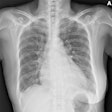Dear Cardiac Imaging Insider,
Advanced visualization techniques continue to gain in popularity for radiologists performing coronary CT angiography (CTA). New software applications make 3D images fast and easy to produce. The images, which resemble real anatomy in all its splendor, can be rotated, manipulated, and read somewhat intuitively. Referring physicians can show patients where the problem lies; interventionalists and cardiac surgeons can use them to plan bypass grafts or stent implantations with great precision.
There's just one problem, according to radiologists in Germany. Sensitivity for the detection of relevant stenoses is unacceptably low when advanced visualization techniques are used alone.
In a just-completed pilot study, Dr. Christopher Herzog and colleagues at the University of Frankfurt, along with researchers from the Medical University of South Carolina in Charleston, scanned patients with 64-slice MDCT.
One team read the CTAs with axial images, maximum intensity projections (MIP), and multiplanar reformatting (MPR); another used only advanced visualization software. A third group examined the native images in addition to using the advanced visualization software. Find out what happened in our Insider Exclusive, published several days in advance for our Cardiac Imaging Insider subscribers.
Another story from Germany takes a closer look at cardiac pacemakers and MRI. The two are widely compatible, according to Dr. Claas Naehle from the University of Bonn. Researchers tested cardiac pacemakers in the bore of a 3-tesla scanner, and in a group of patients who underwent MR imaging of the brain. There were no adverse events, no significant heating, and no changes in pacemaker function, the group reported at this year's RSNA meeting. Also from RSNA, a study from the European Union found that coronary CTA was more cost-effective than other methods of diagnosing coronary artery disease.
Back in the U.S., an intriguing talk by American College of Cardiology President Dr. Steven Nissen covered extraluminal plaque, which accounts for 99% of the atherosclerotic plaque burden and is blind to most imaging techniques. Just scroll down for the rest of the news in cardiac imaging.
Wishing you peace and happy holidays from all of us at AuntMinnie.com.



















